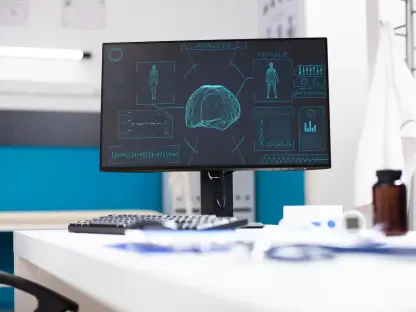Faisal Zain, renowned for his expertise in healthcare technology, particularly in the development of medical devices for diagnostics and treatments, joins us today for an insightful discussion. As healthcare systems increasingly explore the integration of artificial intelligence, Faisal provides a nuanced perspective on the opportunities and challenges this presents. His deep understanding of medical technology innovations offers a valuable lens through which we can understand the implications of AI adoption in clinical settings.
How do large language models (LLMs) compare to traditional clinical decision support systems in identifying drug-to-drug interactions, based on recent research findings?
The recent studies highlight a clear performance gap between traditional clinical decision support systems and LLMs when it comes to identifying drug-to-drug interactions. Traditional systems identified a much larger number of relevant instances compared to LLMs. This difference underscores the need for caution when relying on AI alone for such critical tasks. While LLMs have impressive language processing capabilities, they currently fall short in this specialized area, possibly due to their lack of focus on healthcare-specific datasets and trained models tailored for clinical environments.
What are some reasons healthcare providers express caution in adopting AI into clinical practice, according to the 2024 Healthcare IT Spending study?
Healthcare providers have valid concerns when considering AI adoption, particularly because of regulatory, legal, cost, and accuracy issues. These are all crucial given the stakes involved in patient safety. AI systems must meet strict standards to ensure they do not compromise care quality. The push for compliance with regulations and maintaining high accuracy levels is critical. Therefore, providers are proceeding with caution, even as they are interested in the potential benefits AI might bring.
What are the benefits and risks of integrating AI technology into clinical workflows?
Integrating AI into clinical workflows offers the benefit of potentially improving efficiency by delivering faster processing and analysis of data, which can lead to better-informed decision-making. However, this comes with the risk of over-reliance on AI systems that may not yet be fully reliable or may have limited applicability. Moreover, the transition itself may involve significant resource investment and staff retraining, and there is always a risk of technological errors affecting patient outcomes.
How can AI enhance decision support systems that provide medication information for prescribers?
AI has the potential to enhance decision support systems by rapidly pulling relevant and up-to-date medical literature, guidelines, and drug safety information into a cohesive format for prescribers. This can help prescribers stay informed and make quick decisions without being bogged down by the vast amount of information they need to sift through manually. When AI systems are paired with a robust evidence-based framework, they can be invaluable in expanding the scope and speed of clinical insight.
What distinguishes purpose-built AI systems from general AI tools like ChatGPT?
Purpose-built AI systems are designed with specific functionality in mind, targeting a narrow audience with precise needs. They are trained on specialized datasets that are peer-reviewed and constantly updated to reflect the latest clinical findings and regulatory materials. This ensures accuracy in specific applications. The systems are tailored to interpret healthcare-related queries accurately, providing more contextual and relevant responses compared to general AI tools, which might not effectively handle healthcare-specific nuances.
What features should a decision support AI have to cater to the needs of clinicians dealing with complex scenarios?
A decision support AI for clinicians should offer multiple evidence-based options for various scenarios, such as choosing among different administration methods for IV drugs. Recognizing its own limitations is also crucial, to avoid misleading clinicians by suggesting uninformed solutions. Transparent communication about its decision process and underlying data should be prioritized, allowing clinicians to interpret and validate the AI’s suggestions confidently.
In what ways must clinicians be involved in the development of AI technology to ensure patient safety?
Clinician involvement is essential in all stages of AI development, from initial design to testing and implementation. Their insights into clinical workflows and patient interactions provide invaluable input that will shape the system to be more intuitive and effective in real-world situations. Clinicians also act as a vital feedback loop, driving continuous improvements to ensure that AI technologies are aligned with the evolving standards of care and patient safety.
How does a collaborative approach between human clinicians and AI contribute to better healthcare outcomes?
The human-AI partnership brings together the best of both worlds: the critical thinking and empathy of human clinicians with the processing power and speed of AI systems. This collaboration allows for more nuanced and comprehensive patient care, as clinicians can leverage AI insights to enhance their clinical judgment. Working in tandem, they can offer more personalized and effective treatment plans, ultimately leading to improved patient outcomes.
What is your forecast for AI in healthcare?
Looking forward, the role of AI in healthcare will likely expand, but cautiously and responsibly. We should expect the development of more specialized AI systems that enhance, rather than replace, the decision-making capabilities of healthcare practitioners. As AI technology matures, it will be crucial to maintain rigorous standards for safety and efficacy, ensuring that AI’s integration supports the primary goal of improving healthcare outcomes.









